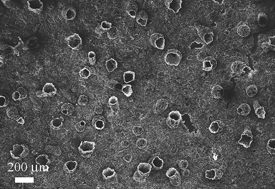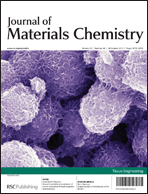A novel semiconducting biomaterial composed of salt leached poly(lactic-co-glycolic acid) (PLGA) and chloride-doped polypyrrole (PPy–Cl) was created using a simple, yet flexible, synthesis technique. The three-step method consists of (1) spin casting a solution of PLGA-salt, (2) salt leaching combined with pyrrole infusion, and (3) electrochemical synthesis of PPy–Cl. This technique resulted in unique micron- and nano-scale surface morphology that can be modulated by altering the synthesis conditions and endows the films with electrical properties beneficial for microelectrode applications. Specifically, for all conditions that created a subsequent PPy:PLGA film, advantageous electrical properties were quantified by a decrease in impedance and good conductance, as compared to negative controls. This decrease in impedance measured up to 87 percent versus plain PPy films. Since the biocompatibility of both PPy and PLGA is well known, the PPy:PLGA blends may have several biomedical engineering applications, where good conductance and low impedance are desired. Also, the films generated can be easily removed from their conducting substrate for tissue engineering applications or can remain on their conducting substrates for neural probe applications that would benefit from the unique surface morphology of these hybrid films.

You have access to this article
 Please wait while we load your content...
Something went wrong. Try again?
Please wait while we load your content...
Something went wrong. Try again?


 Please wait while we load your content...
Please wait while we load your content...